
Comics Enter the Fight Against Polio
Posted November 9, 2011 at 7:00 pm
By David LoTempio, Contributor(All images researched and provided by Steven Bennett)
Polio—scourge of children and microscopic hidden enemy of parents—was a frequent national health issue in America through the first 50 years of the twentieth century. The virus killed 2000 children in New York City alone during the 1916 epidemic and left thousands more paralyzed across the United States. Epidemics during the summer were an annual event.
In response to the epidemics plaguing the country, President Franklin D. Roosevelt helped to establish the National Foundation for Infantile Paralysis. Its mission was to lead, direct, and unify the fight against every aspect of the killing and crippling infection of poliomyelitis. But to lead this fight, the Foundation needed money and so it created the fund-raising campaign the MARCH of DIMES that solicited small contributions—dimes and quarters—from across the country. The MARCH of DIMES was so popular that it annually raised more money than any other health campaign. This success was in part due to the impact of polio across socio-economic lines—everyone in the country knew about polio or had seen its devastating touch first hand.
The campaign soon captured the imagination of the country and spread to all walks of life, including comic books. Featured below are some covers of popular comics in the 1940s and 1950s that promoted the Fight against Infantile Paralysis and polio.
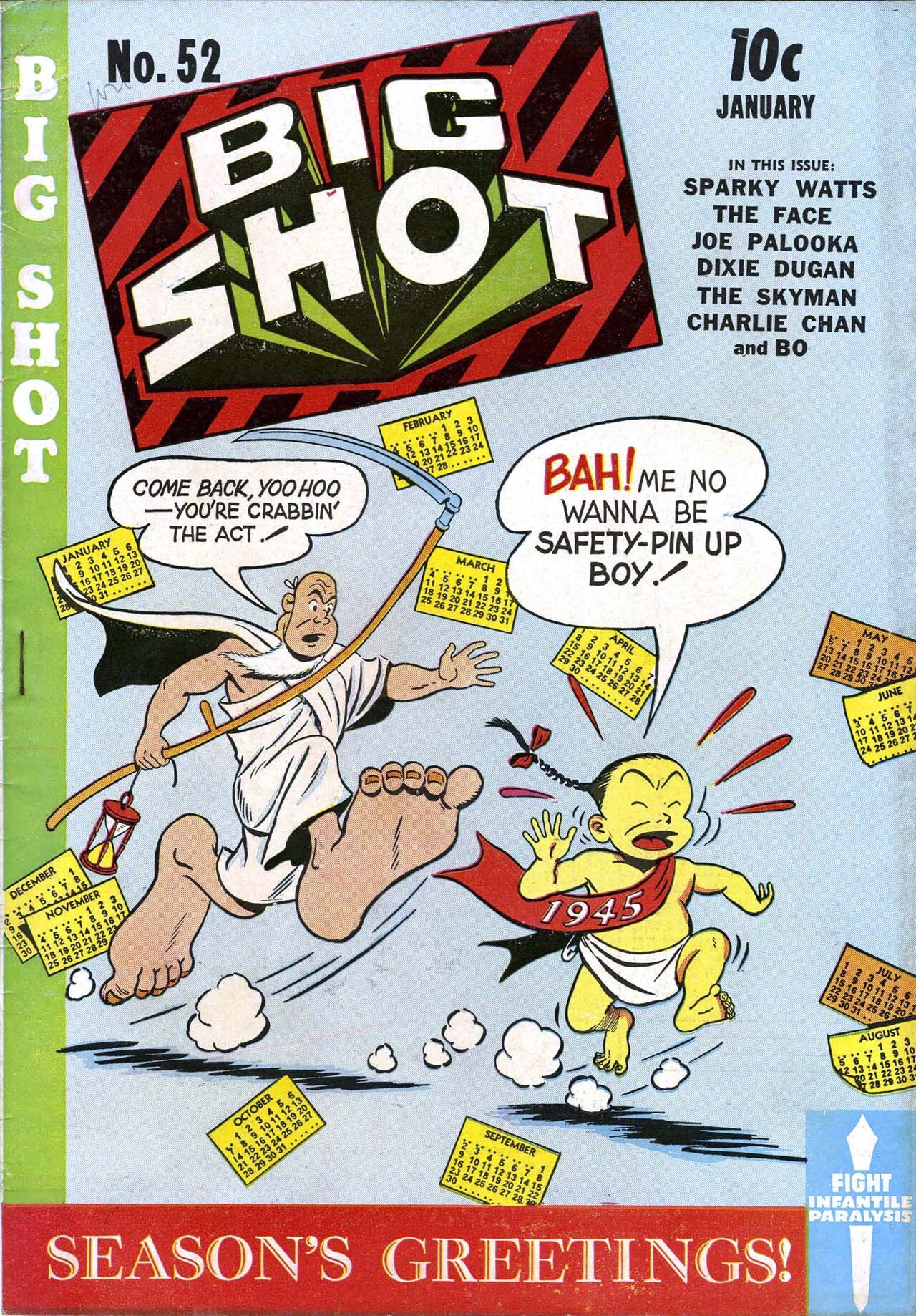
Big Shot Comics was an anthology book that featured humor, superheroes, and mystery stories. Issue 52 has a cover date of January 1945, but was likely on the stands sometime in December 1944. The publisher Columbia Comics has added the “Fight Infantile Paralysis” badge in the lower right-hand corner. The badge isn’t lost on the cover despite its location though. The characters are actually running towards the badge so the eye is naturally drawn to the edge. The badge could have been placed in the opposite corner, which would have ruined the effect, so some care was taken regarding its prominence.
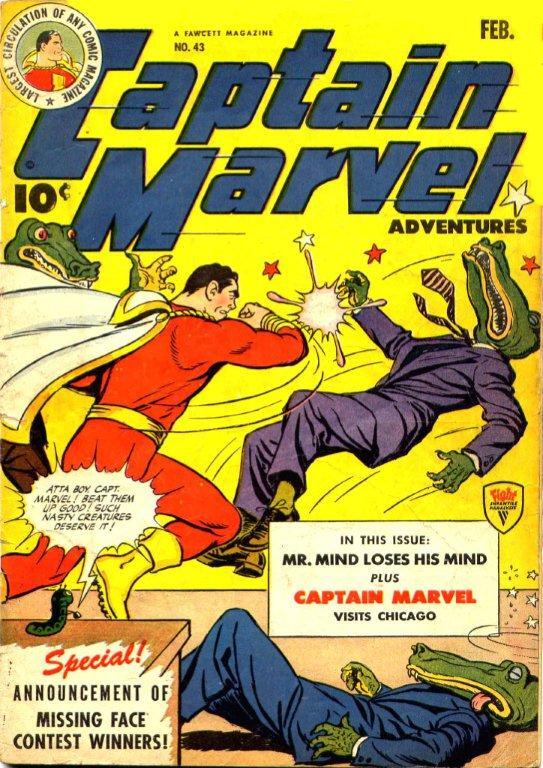
Captain Marvel, the World’s Mightiest Mortal, would surely have defeated polio if he hadn’t been otherwise engaged in deadly combat with his arch-nemesis Mr. Mind. Their epic, two year war ended in issue 46 while the battle to find a polio vaccine wouldn’t end for another seven years! The cover is so crowded with action and words that you wouldn’t blame a reader for missing the “Fight Infantile Paralysis” badge. The badge is carefully placed in front of the title card, and mirrors the heroic colors of Captain Marvel’s costume, but is otherwise a minor addition.
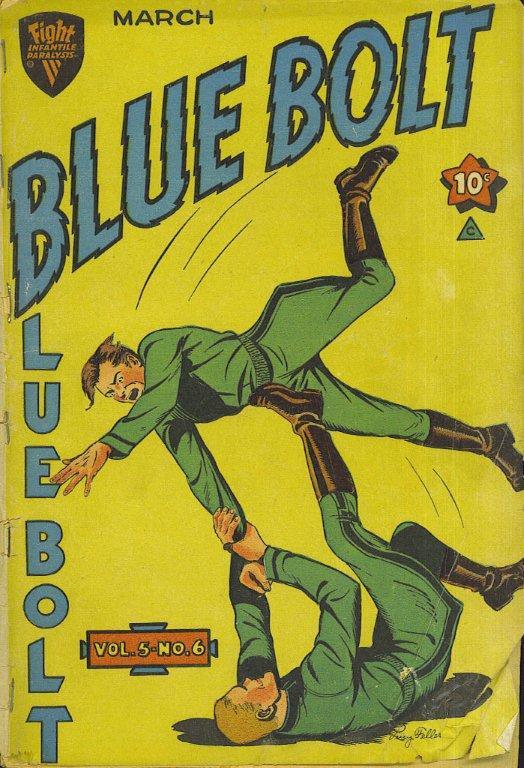
One month later, in March, Blue Bolt Comics, published by Novelty Press, featured a large version of the Fight Infantile Paralysis badge in the highly visible left corner. The layout of the cover—the badge sitting directly above the banner, the direction of the wrestling men—help to draw the reader’s eye towards the upper left portion.
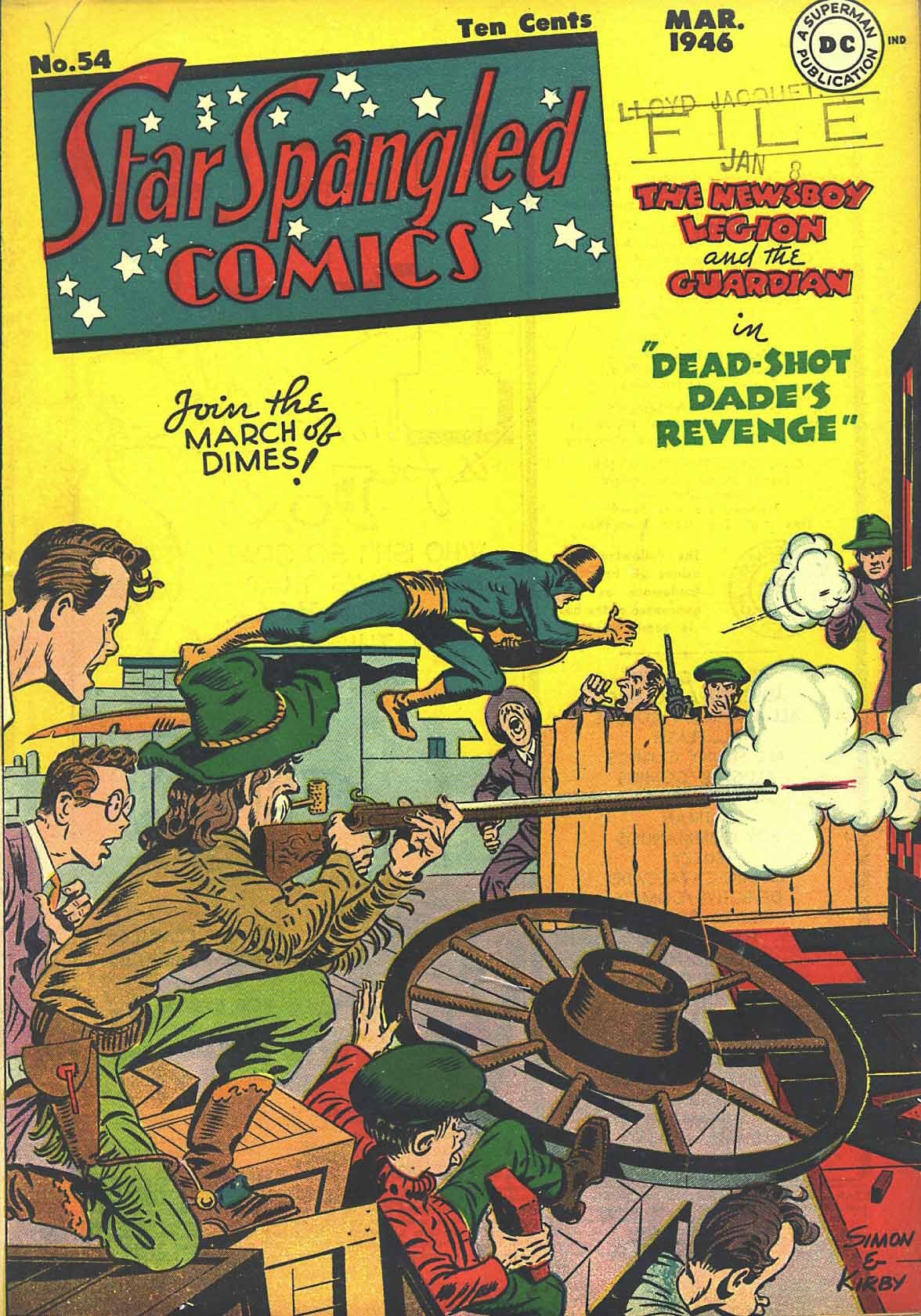
National Comics (eventually DC comics) took a very different approach to proclaiming their support for the fight against polio in 1946. Instead of using the “Fight Infantile Paralysis” badge, they commanded readers to “Join the MARCH of DIMES!” Clearly, Dead-Shot Dade and the Newsboy Legion were out collecting dimes and quarters for the MARCH of DIMES when they encountered a group of cheapskates.
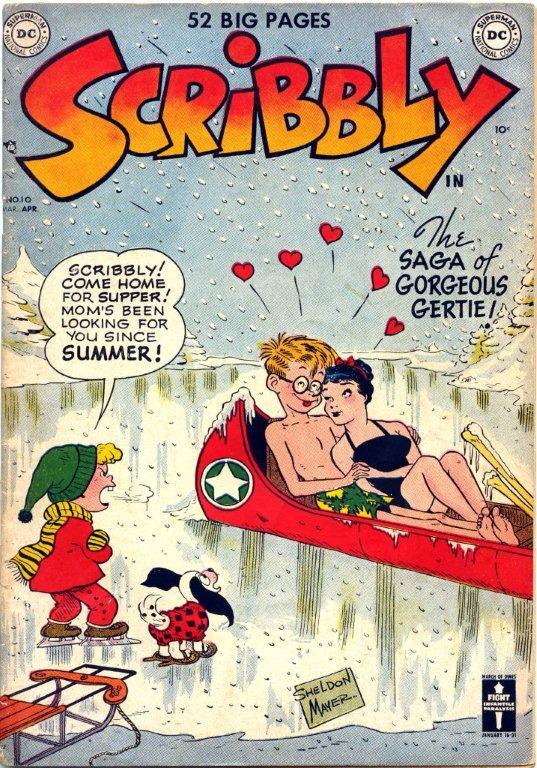
The fight against polio would make dramatic strides in the 1950s after Dr. Hilary Koprowski developed a vaccine in 1950 and Dr. Jonas Salk developed his vaccine 1952. The “Fight Infantile Paralysis” logo has changed to include the “March of Dimes.” The badge is so small that it seems incidental though. Also, fighting infantile paralysis seems secondary to finding this girl’s parents and getting both kids to the hospital for hypothermia treatment.
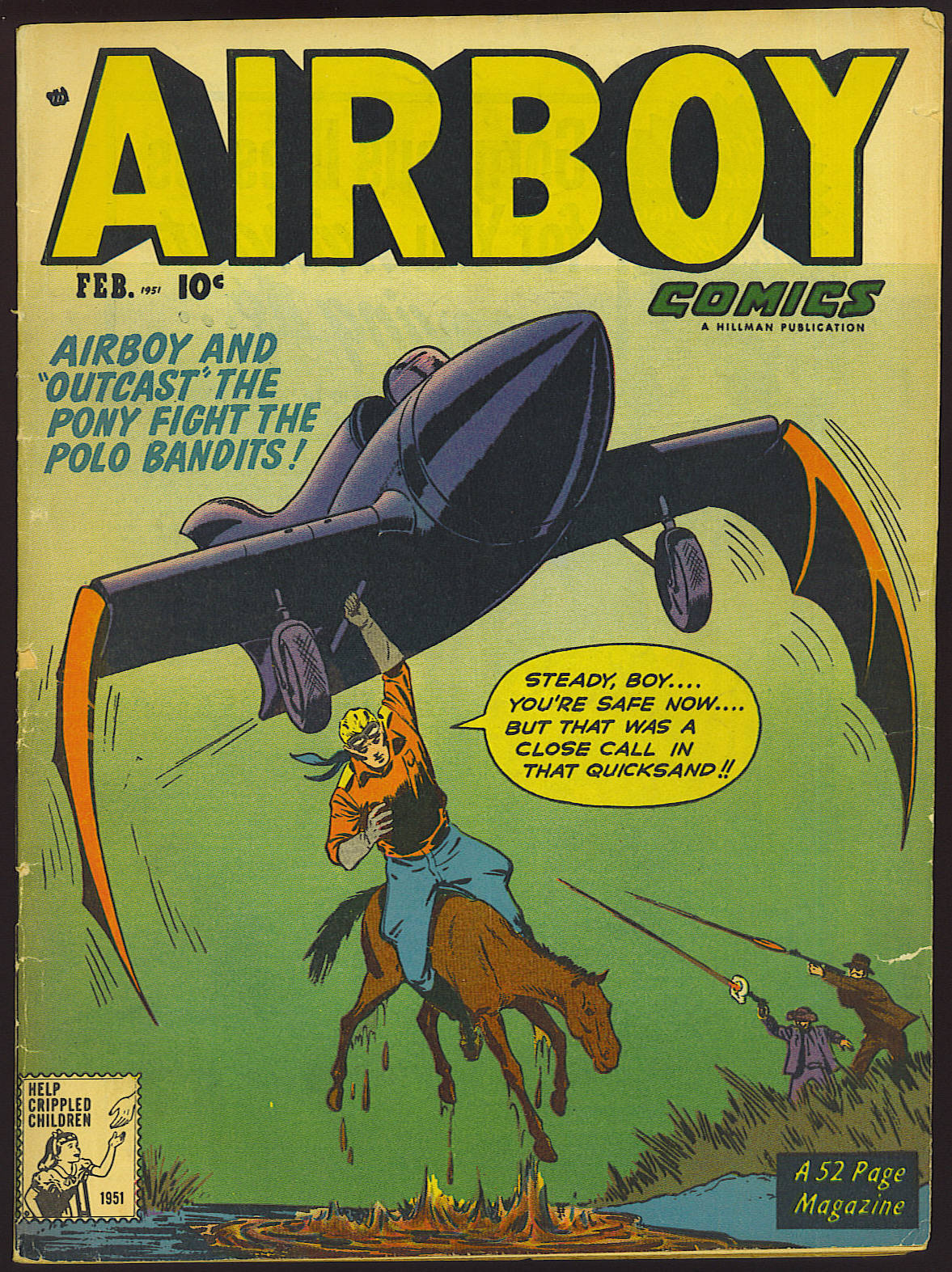
Lastly, this cover from Airboy, dated February 1951, displays a dramatically different marketing approach by the National Foundation for Infantile Paralysis. The “Fight Infantile Paralysis” badge has been dropped in favor of a “Help Crippled Children” stamp featuring a girl with crutches. The girl is either looking for a helping hand or collecting funds for the MARCH of DIMES. It is a simple but powerful image that actually competes with the improbable melodrama of Airboy single-handedly (literally) lifting a pony stuck in quicksand while evading gunfire.
The involvement of comic book publishers in the war on polio didn’t end at the cover though. Superman and Wonder Woman actively solicited donations in their comics. Public Service Announcements educating readers, presumably children, in polio prevention were printed alongside strips in the books. We’ll visit some of these comics and PSAs in a future blog post.
- Category
- Museum of disABILITY History Blog
- Tags
- Comic Books | Disability History | Polio | Pop Culture
Comments
David Lotempio
Posted November 29, 2011 at 12:00 am
Donna
Posted November 11, 2011 at 12:00 am
Excellent, enjoyable, informative! Loved the old comics covers too. Looking forward to more.

The "Help Crippled Children" badge was actually an Easter Seals promotion and NOT related to the Infantile Paralysis Foundation. Mea culpa for the error.